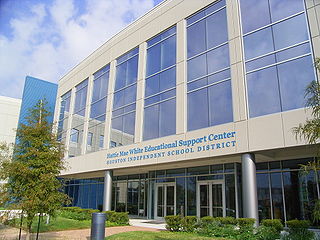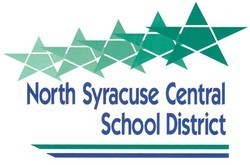Related Research Articles

The administrative divisions of New York are the various units of government that provide local services in the State of New York. The state is divided into boroughs, counties, cities, towns, and villages. They are municipal corporations, chartered (created) by the New York State Legislature, as under the New York State Constitution the only body that can create governmental units is the state. All of them have their own governments, sometimes with no paid employees, that provide local services. Centers of population that are not incorporated and have no government or local services are designated hamlets. Whether a municipality is defined as a borough, city, town, or village is determined not by population or land area, but rather on the form of government selected by the residents and approved by the New York State Legislature. Each type of local government is granted specific home rule powers by the New York State Constitution. There are still occasional changes as a village becomes a city, or a village dissolves, each of which requires legislative action. New York also has various corporate entities that provide local services and have their own administrative structures (governments), such as school and fire districts. These are not found in all counties.
The University of the State of New York is the state of New York's governmental umbrella organization for both public and private institutions in New York State. The "university" is not an educational institution: it is, in fact, a licensing and accreditation body that sets standards for schools operating in New York State, from pre-kindergarten through professional and graduate school, as well as for the practice of a wide variety of professions. USNY's governing body is known as the New York State Board of Regents.
The Pennsylvania Department of Education is the executive department of the state charged with publicly funded preschool, K-12 and adult educational budgeting, management and guidelines. As the state education agency, its activities are directed by the governor appointed Pennsylvania's Secretary of Education. The agency is headquartered at 333 Market Street in Harrisburg. The Pennsylvania Department of Education oversees 500 public school districts of Pennsylvania, over 170 public charter schools (2019), Career and Technology Centers/Vocational Technical schools, 29 Intermediate Units, the education of youth in State Juvenile Correctional Institutions, and publicly funded preschools. In 2019, the Pennsylvania Department of Education employs approximately 500 persons.
The Illinois Community College System consists of 39 public community college districts, composed of 48 community colleges and one multi-college center where 3 of the community colleges offer additional classes. Thirty-seven of the districts have a single college; two districts are multicollege. Since July 1990, the entire state has been included within community college district boundaries.
Northport-East Northport Union Free School District is a school district in New York.
In the American education system, a superintendent or superintendent of schools is an administrator or manager in charge of a number of public schools or a school district, a local government body overseeing public schools. All school principals in a respective school district report to the superintendent. The role and powers of the superintendent vary among areas. According to Sharp and Walter, a popularly held opinion is that "the most important role of the board of education is to hire its superintendent."

An independent school district (ISD) is a type of school district in some US states for primary and secondary education that operates as an entity independent and separate from any municipality or county, and only under the oversight of the respective state government. As such, the administrative leadership of such districts is selected from within the district itself and has no direct responsibility to any other governmental authority. This independence normally also implies that the district has its own taxing authority that is outside the direct control of other governmental entities.

The Burlington County Institute of Technology (BCIT) is a county-wide public school district that serves the vocational and technical education needs of students at the high school and post-secondary level in Burlington County, New Jersey, United States. BCIT's more than 2,000 students come from 38 sending school districts throughout the county.

The North Syracuse Central School District (NSCSD) is a public school district in Central New York in the United States. The district is located just outside Syracuse, New York. It serves the communities of North Syracuse, Clay, Cicero, Bridgeport, and Mattydale. The District covers 89 sq mi (230 km2) with approximately 5,600 residents.

The Oklahoma State Department of Education is the state education agency of the State of Oklahoma charged with determining the policies and directing the administration and supervision of the public school system of Oklahoma. The State Board of Education, the governing body of the Department, is composed of the Oklahoma State Superintendent of Public Instruction and six members appointed by the Governor of Oklahoma with the approval of the Oklahoma Senate. The State Superintendent, in addition to serving as chair of the Board, serves as the chief executive officer of the Department and is elected by the voters of Oklahoma every four years.
Local government in New Jersey is composed of counties and municipalities. Local jurisdictions in New Jersey differ from those in some other states because every square foot of the state is part of exactly one municipality; each of the 564 municipalities is in exactly one county; and each of the 21 counties has more than one municipality. New Jersey has no independent cities, or consolidated city-counties.
Educational Service Units (ESUs) are political subdivisions that serve as intermediate level education service agencies for member school districts. Educational Service Units were created by the Nebraska Legislature in 1965 as cooperative programs to make services more cost effective for school districts. There are currently 17 ESUs providing services to 261 public school districts. Educational Service Units provide core services for school districts, which include staff development, technology, and instructional materials. Beyond the core services, ESUs determine the services to be offered based on the needs of their member school districts.
Tech Valley High School is a four-year regional public high school. It is located on the campus of the SUNY Polytechnic Institute Colleges of Nanoscale Science and Engineering in Albany, New York, United States. The school opened in September 2007 with a first class of 40 students. Its first class graduated in June 2011 on the campus of the University at Albany.
Berlin Central School District (BCSD) is a rural public school district located in the eastern part of Rensselaer County, New York and borders the Commonwealth of Massachusetts. The district has two operating school buildings: one elementary school and one middle school/high school building. The district is a member of the Rensselaer-Columbia-Greene Board of Cooperative Educational Services (BOCES), known as Questar III.

The Schenectady City School District is a public city school district in the city of Schenectady in Schenectady County, New York. The district has 17 operating school buildings and is a component district of the Capital Region Boards of Cooperative Educational Services (BOCES). It was established in 1854 and served 9,256 students in pre-kindergarten through twelfth grade in the 2018–2019 school year.
New Visions: Law & Government is an academic career-exploration program for high school seniors from the state of New York. The program is located at the New York State Education Department Building in Albany, New York. Offered through the Capital Region Board of Cooperative Educational Services (BOCES), New Visions: Law & Government integrates Advanced Placement United States Government and Politics with English, Law and Economics. The program offers college credit through the University at Albany, SUNY's University in the High School Program (UHS) and is the only high school program to offer college credit in Criminal Justice through UHS.
Encyclopaedia Britannica Educational Corp. v. Crooks, 542 F.Supp. 1156 (1982), was a landmark legal case in the United States in which it was decided that making off-the-air copies of publicly broadcast television programs does not constitute fair use, even if it is intended for a non-commercial and charitable purpose.

The Livingston Educational Service Agency (LESD) is an intermediate school district in Michigan, headquartered in Howell.
References
- 1 2 "Laws of New York" . Retrieved 2011-12-13.
- ↑ "Laws of New York" . Retrieved 2011-12-13.
- ↑ "BOCES:P12:NYSED" . Retrieved 2011-12-13.
- 1 2 3 "What is BOCES" . Retrieved 2011-12-13.
- ↑ "History of the District Superintendency" . Retrieved 2011-12-13.